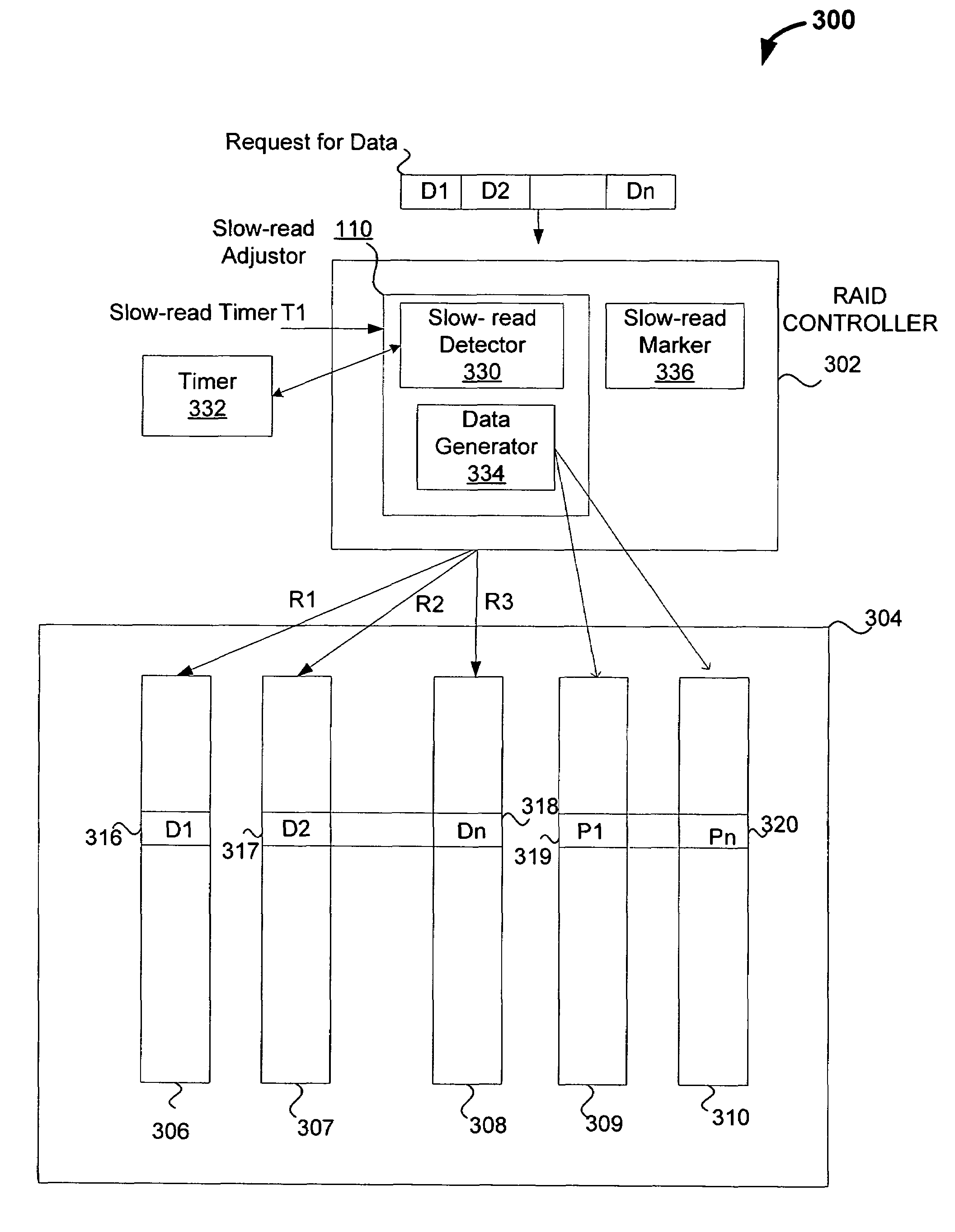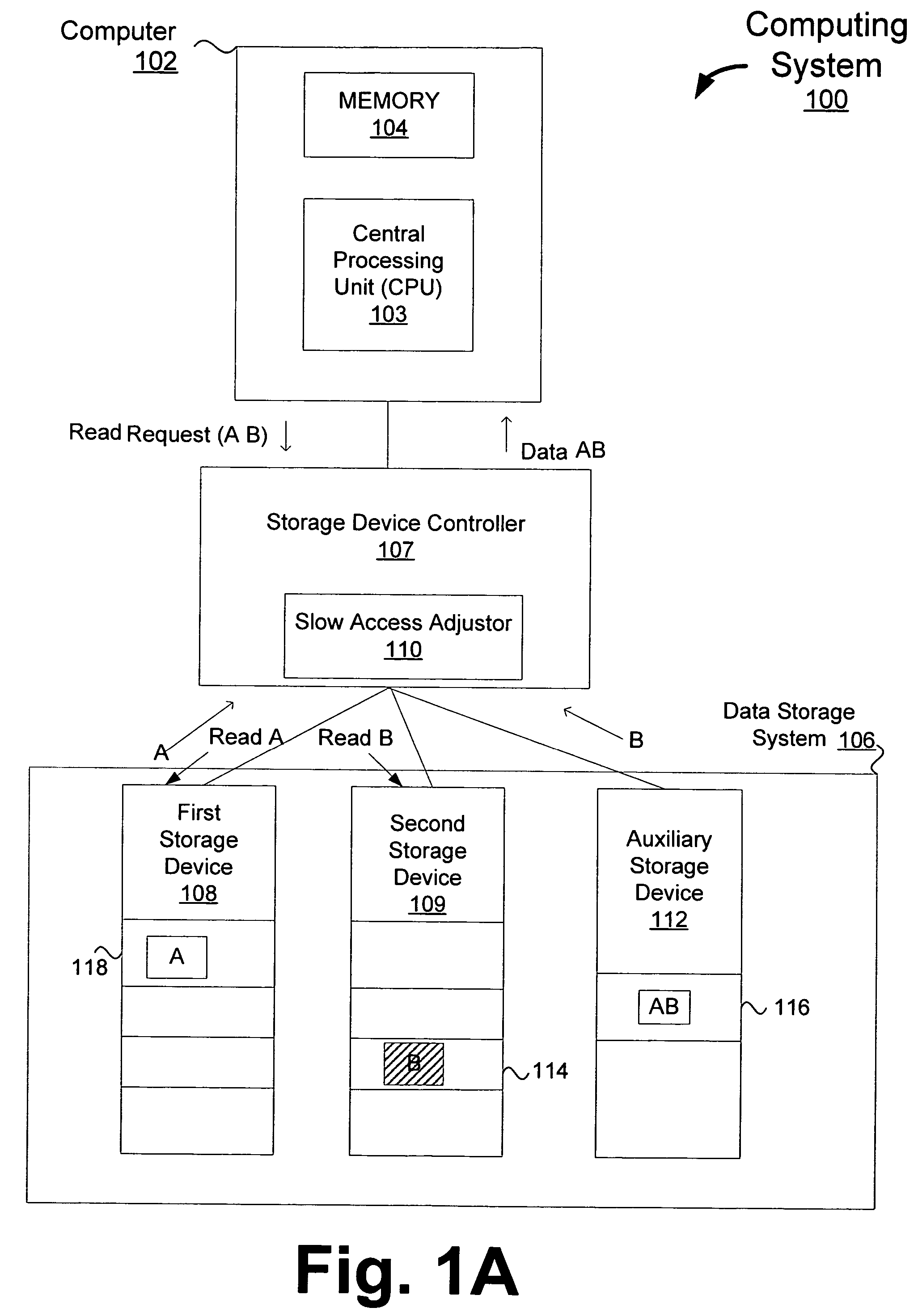Accessing data storage systems without waiting for read errors
a data storage system and error-free technology, applied in the field of data storage systems, can solve problems such as potential performance problems that can manifest in undesirable effects, and achieve the effect of detecting, correcting and preventing undesirable access delays
- Summary
- Abstract
- Description
- Claims
- Application Information
AI Technical Summary
Benefits of technology
Problems solved by technology
Method used
Image
Examples
Embodiment Construction
[0016]As noted above, conventional data accessing techniques in some cases fail to access data storage systems (e.g., hard drives, disks) at an acceptable rate. One such example is real time video playback where relatively high data rates are required (e.g., 165 MB per second) to display about 30 frames per second. This high data rate cannot be maintained using conventional techniques. As a result, one or more frames can be dropped. Consequently, the real time video is not displayed appropriately.
[0017]One reason for this failure is that sometimes it takes significantly longer than expected to access a data storage device (e.g., hard drive, disk). As a result, data cannot be provided in a timely manner. As will be known to those skilled in the art, this delay can be attributed to many factors including, for example, a defective media, vibrations, head defects, or poor storage of write data. One example of a “slow-access” operation is a “slow-read” operation that takes longer than ex...
PUM
 Login to View More
Login to View More Abstract
Description
Claims
Application Information
 Login to View More
Login to View More - R&D
- Intellectual Property
- Life Sciences
- Materials
- Tech Scout
- Unparalleled Data Quality
- Higher Quality Content
- 60% Fewer Hallucinations
Browse by: Latest US Patents, China's latest patents, Technical Efficacy Thesaurus, Application Domain, Technology Topic, Popular Technical Reports.
© 2025 PatSnap. All rights reserved.Legal|Privacy policy|Modern Slavery Act Transparency Statement|Sitemap|About US| Contact US: help@patsnap.com



